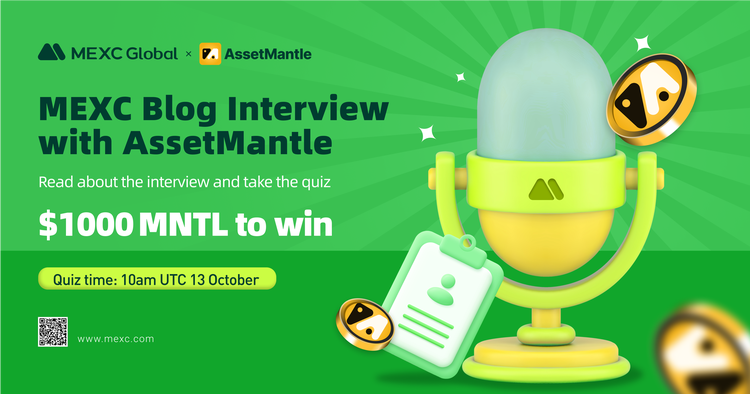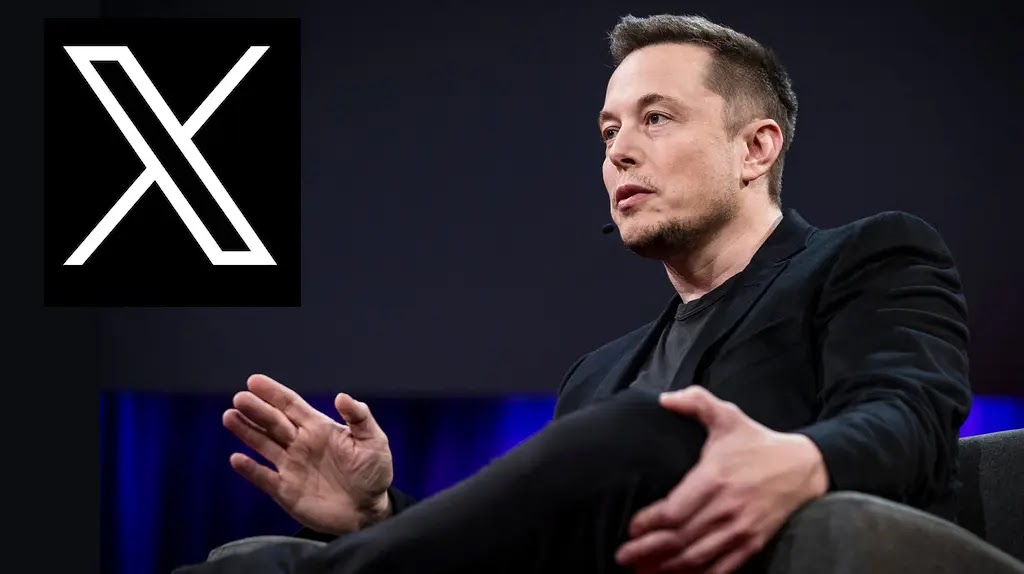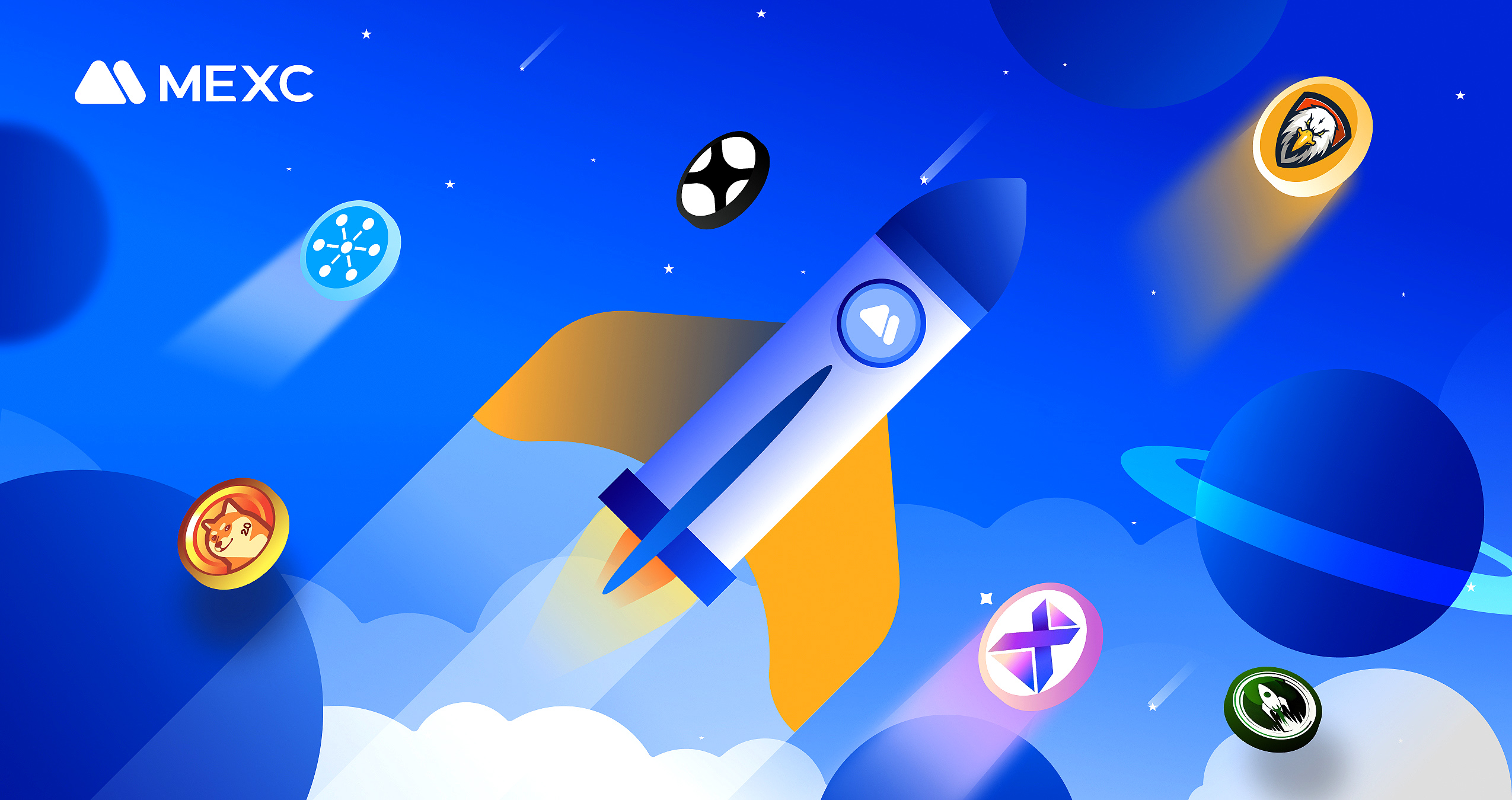In this blog interview, you’ll find insights about the AssetMantle project. In an event hosted by MEXC, you will meet AssetMantle team.

MEXC:First, can you introduce AssetMantle?
AssetMantle Team: Sure. AssetMantle is an multi-tenant NFT framework that enables users to securely mint, own, and trade digital assets.
MantleChain serves as the infrastructure layer to build interChain dApps leveraging IBC and offer utilities via MantleModules
Built on interNFT Standard, AssetMantle implements an end-to-end stack of open-source modular tools that developers can modify to fit advanced use-cases.
The No-Code Toolset further enables creators to build their customized assets and marketplaces in a permission-less and scalable manner.
MEXC:From your perspective, what is the difference between OpenSea and NFT trading platforms like X2Y2? What is the difference between AssetMantle and OpenSea?
AssetMantle Team: OpenSea is an NFT marketplace more focused towards minting and trading of NFTs into arts, collectibles and music. AssetMantle being a Layer-1 chain provides you the support to introduce advanced set of use-cases around NFTs utilizing the MantleModules. MantlePlace (NFT Marketplace for AssetMantle chain) provides some of these features such as Staking for NFTs, Fractional Ownership,TradeRoom, Composibility and Decomposibility for NFTs and interchain NFT transfers.
With MantleBuilder’s no-code toolset, enterprises and creators can build their own customized marketplaces not just at a front-end level but also define their own set of metadata structure, customized assets at access-control mechanism on the platform.
MEXC:What are the advantages of AssetMantle?
AssetMantle Team: AssetMantle brings in toolsets and features that were not easily accessible by NFT creators and collectors who are not savvy with code.
Most NFT transactions have a heavy carbon footprint, and projects run on smart contracts within containers. AssetMantle, on the other hand, has implemented DIDs and NFTs natively on top of the chain, and these tokens would be the first citizens of the chain, just like fungible tokens. This dramatically reduces the overhead of computation through containers. Further, the Delegated Proof-of-Stake (DPoS) consensus model allows nominal minting fees and minimal transaction costs.
The NFTs use the interNFT metadata standard, which facilitates the interoperability of NFTs. Further, MantlePlace offers a very intuitive experience for all users, and MantleBuilder provides complete customizability using a drag-and-drop interface that helps creators build their marketplaces.
Additionally, AssetMantle also supports fractional ownership of NFTs, commoditization, multiple file types for a wide range of creators, interchain NFT transfers, and more.
MEXC:Why did you choose Cosmos ecosystem as the NFT trading market over the Ethereum ecosystem? After all, the current Ethereum ecosystem has the most users.
AssetMantle Team: While there are several technical reasons to choose Cosmos, one of the core reasons for choosing the Cosmos ecosystem is its open-source nature and facilitation of cross-chain interoperability. Most blockchains are inherently siloed. Further, EVM blockchains tend to limit sovereignty.
With Cosmos, we could deploy an utterly sovereign mainnet, use interNFT standards and IBC protocol, and leverage Tendermint Core as our consensus engine.
Further, the team has been very familiar with the Cosmos ecosystem since 2017 and has built impactful products before.
Above all, the vision of Cosmos to be the internet of blockchains very much resonated with the idea that we had, i.e., blockchain and decentralization are not supposed to be just a singular chain that serves as the world’s computer.
So, keeping all these factors in mind, it is only natural for us to gravitate toward this ecosystem.
MEXC:Platforms like OpenSea do not issue their own tokens, but X2Y2 and LookRrare do issue tokens. However, at present, these platform tokens do not seem to have much practical use, and we cannot see every of them on the platform. Hence, what are the application scenarios of MNTL? What are the benefits for the platform and users?
AssetMantle Team: $MNTL is governance and staking token securing the MantleChain along with supporting the MantlePlace (NFT marketplace) transactions: minting, trading, royalties, and fees. Initially, the token will also help bootstrap genesis creators, liquidity provision, and NFT minting and trading activities through retroactive rewards and airdrops.
With the staking being enabled, $MNTL holders can stake their tokens to receive staking rewards with an APR close to 140% as of today. The token economics for MNTL is designed in such a way that the platform NFT users would be able to get exposure towards DeFi concepts such as Staking, LPs, etc. The team have ensured that the exposure for MNTL is across all the active NFT ecosystem and communities. Thus, providing the wrapped version of MNTL (ERC20) across Ethereum and Polygon and IBC Compatible across major L1s from cosmos.
MEXC:What is the cross-chain principle for AssetMantle to support NFT cross-chain?
AssetMantle Team: AssetMantle utilizes the interNFT standard for cross-chain NFTs. The current set of common NFT definitions are dominated by the ERC721 interface definitions which are biased towards smart contract-based definitions of NFTs. The main motivation of the standard is to:
- Define an inter-chain NFT interface that all data structures must implement to be classified as an interNFT and an interNFT wallet interface that can hold the ownership of all such interNFT implementations for an account.
- This will allow all projects in the inter-chain ecosystem to:
- Define their own implementation of interNFT structures with custom mint, mutation and burn transaction logic maintained at their app chain.
- Have a common wallet implementation for all interNFT implementations which can hold ownership information of multiple kinds of interNFTs from multiple chains in a single wallet for an account.
- Natively send the ownership of interNFTs across chains through inter-chain communication protocols without a requirement for permissioned bridges or token transformation/pegging.
MEXC:What are the reasons for the frequent occurrence of cross-chain ecological asset security incidents? Assuming that I am a user of AssetMantle, should I have such concerns? Why?
AssetMantle Team: Cross chain bridge based vulnerabilities are one of the prominent point of attacks, apart from hot wallets and 3rd party wallets. In simple terms bridge protocol operates by depositing tokens in a contract/wallet at one chain, and issuing tokens in another chain, triggered by the deposit event. The major point of attack happens either in the deposit wallet, often centrally controlled, or by mimicking a deposit event to trigger issue of tokens in the other chain. In case of AssetMantle, there is no association with such bridge protocols. AssetMantle is however at forefront of building Interchain NFT standards and leveraging Inter-Blockchain Communication (IBC) of Cosmos ecosystem, which fundamentally differs from bridge protocol’s deposit and issue mechanism.
MEXC:The current NFT trading market is in a state of sluggishness in a bear market. How does this affect the development of AssetMantle?
AssetMantle Team: Transaction volume of NFT trading as compared to the peak is down in value due to price drops of ethereum and average price but volume is back to March/April levels and recovering.
Traffic has also become much more distributed with NFTs being sold and distributed amongst multiple marketplaces and multiple blockchains as well native in-game marketplaces.
As we see the market trend and ecosystem’s requirement, AssetMantle, which leverages InterNFT standard for multi-chain NFTs and first blockchain – identity based marketplace is going to fill the upcoming requirement for the industry. We also see a huge upside trend in web3 games as they raise big money from VCs. These game are looking for blockchains that can solve much complex usecases currently not possible with EVM based blockchains. AssetMantle’s appchain makes these complex usecases of enterprise, GameFI and metaverse possible and easily integrable with it’s open source modules.
Henceforth, the development is boosted on AssetMantle’s during this bear market as we see a shift from rug NFTs to utility-based NFTs. The grants program saw amazing projects applying to build infrastructure tooling and projects on AssetMantle. The hackathons sponsored by AssetMantle is witnessing huge participation to use the Decentralized Identities using AssetMantle’s modules. There is an increasing participation by different Web3 projects and open source teams in the InterNFT working group call for open source contribution and wide-spread multi-chain adoption.
AssetMantle is built on the philosophy that we stand by “ Community First”. With that being said, our focus has always been on how we can deliver the best to our growing community. We always have focused on building out the tech and the experience for the user regardless of market conditions, and we continue to do so.
The last quarter’s updates show our progress over the brunt of the bear market, which in itself shows that the bear market doesn’t phase the growth of AssetMantle development or the community.
MEXC:If possible, can you introduce AssetMantle’s capital and funding situation? Can it support the long-term development of the team?
AssetMantle Team: At AssetMantle, we’ve always been focused on building, and the team is a testament to that, With the Founder & Co-Founder working in the space since 2017 and the rest of the team not too far behind. AssetMantle has been bootstrapped from day one and has no external funding.
As everyone can see, with our continuous updates with integrations, collaborations, and various other participation in the ecosystem, We’ve not slowed down, and the trust in the team for the overall goal at the AssetMantle is strong enough to support us for any long-term development plans.
MEXC:What technical or market partners does AssetMantle currently have to facilitate the development of the project? What are your plans for the near future?
AssetMantle Team: The Partnerships for AssetMantle is distributed across 6 pillars.
- MantleChain
- Validators
- Creators and NFT Partners
- MantleGrants
- MantleLabs Ecosystem Partners
- interNFT Working Group



MEXC:What are your plans for the near future?
AssetMantle Team: Mission is to provide a platform that enables a diverse set of NFTs use cases that extend beyond arts and collectibles and can potentially change the representation of rights and ownership of real-world assets like real estate and other commodities.
Trying to find MEXC blog interviews?
It’s easy! Explore them in a special section of our MEXC blog. Find insights for other recently listed projects at MEXC
Join MEXC and Get up to $10,000 Bonus!
Sign Up


